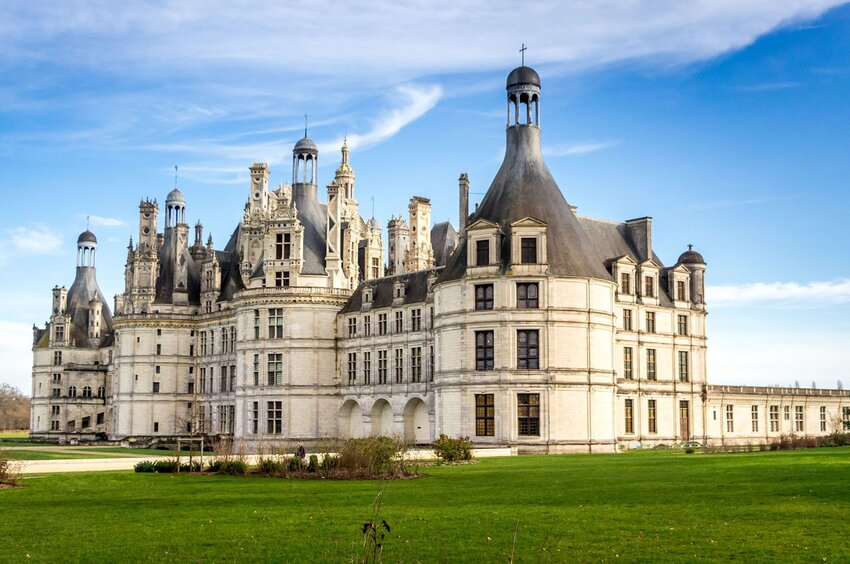A few stars glitter brightly in the night sky. The view swoops beneath the clouds to reveal, piece by piece, a colorful castle dotted with intricate turrets and streaming flags. Our eyes are drawn to a meandering moat. Fireworks go off, while a shooting star makes an arc in the background. Sound familiar? It should be — it’s the iconic Disney intro. This 30-second clip usually marks the start of hours of pure fantasy and stories that hold us spellbound. But the castle itself is based on a blend of real European landmarks. And they’re not the only real-life fairy tale castles out there; Mont Saint Michel, Windsor Castle, Edinburgh Castle, and Herstmonceux Castle are just a few out there just waiting for magic. But what of the castles that we're more familiar with, the ones we've seen in the movies we grew up with? Here are six fantastical, and familiar, structures you can actually visit.
Neuschwanstein, Germany
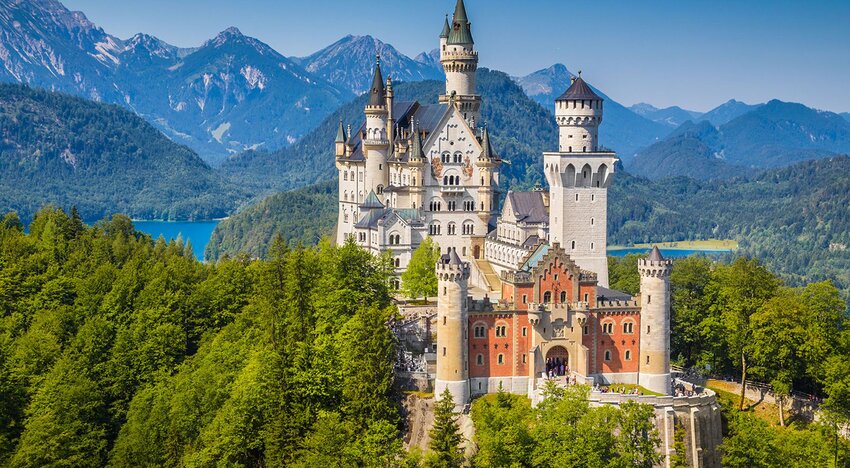
Atop a cliff in the foothills of the Alps and overlooking a crystalline lake, dashing waterfall, and a neighboring yellow castle, Neuschwanstein castle is known as the king of castles. King Ludwig II of Bavaria, famed at the time for his estravagant taste and eccentricity, comissioned this opulent residence in 1868. Although the king died before the castle was completed in the late 19th century, it didn't go to waste. Shortly after building ended Neuschwanstein opened to the public, and to this day 1.4 million annual visitors come to live out their own royal fantasy. Walt Disney visited on a tour of Europe, and it’s said Neuschwanstein was the primary inspiration for Sleeping Beauty’s castle.
Alcázar of Segovia, Spain
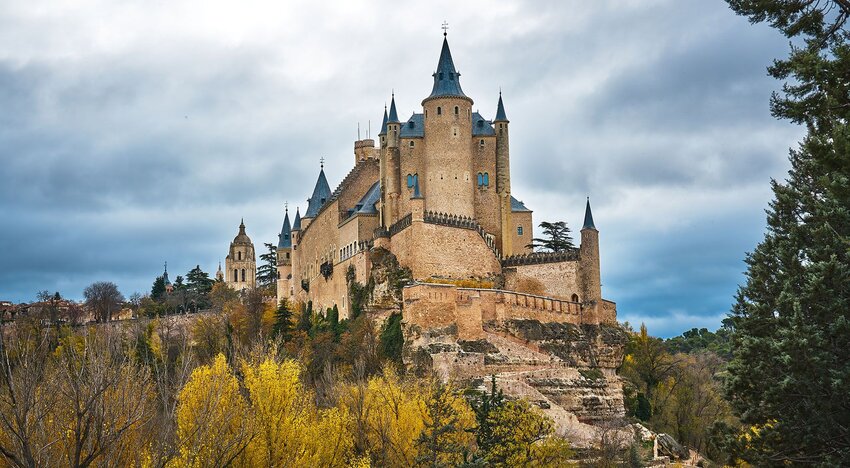
Another European building rumored to have inspired Walt Disney is a turreted treasure that has a long and eventful history. What was originally a Roman outpost grew into an impenetrable state prison, then to an artillery college, and is now a tourist attraction. When you’re not pretending to be Rapunzel at the top of the stone tower, you’ll be lost examining the interior decor dripping in gold and velvet. Tapestries and priceless works of art adorn almost every wall. See how the Alcázar’s royal residents once lived close-up by admiring their suits of armor, grand garments, and dining rooms set for royal banquets.
Château de Chillon, Switzerland
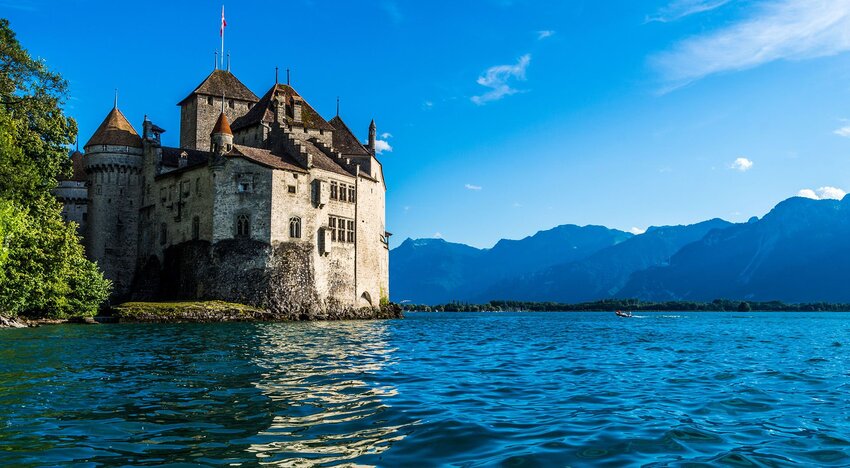
Sitting prittily on Lake Geneva, the Château de Chillon is a Swiss stronghold built on an island and a real life version of Prince Eric's castle. In fact, “Chillon” means “rocky platform” in an ancient dialect. Like most castles, Chillon was of great strategic importance, guarding trade routes between northern and southern Europe. When you visit, you’re guided through its life as a Roman fortress, then a medieval dungeon, before it became a 19th-century restoration project. Its military exterior belies an interior fit for a king, including a Grand hall decorated with a quirky zigzag brickwork pattern. The room’s window benches are a treat for tourists, fairy tale perfect with the loveliest views over Lake Geneva that would have made princes swoon over their mermaid loves.
Eilean Donan, Scotland
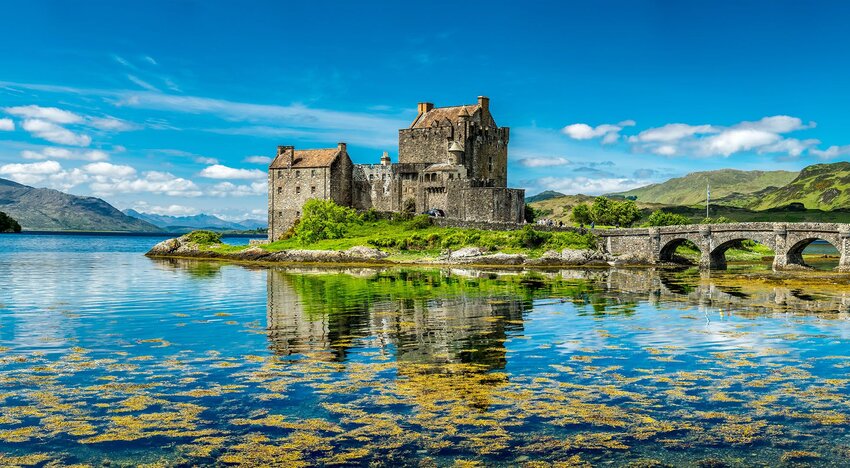
In the movie Brave, gray mist swirls around the Highland towers of Merida’s family seat, its appearance inspired by the brooding nature of Scottish castles. Eilean Donan, arguably the most famous of them all, was a key inspiration for the Pixar team. Accessed only by a footbridge over Loch Duich (don’t worry, no monsters live in this loch), the tall stone structure protected the clans in this part of Scotland from marauding Vikings, English soldiers, and rival families for centuries. However, once Scotland’s warring days were over, Eilean Donan lay in ruins for 200 years. It wasn’t until 1932 that the castle was restored to its former glory. Go for the moody photo ops, but stay for the warm hearths and atmospheric bagpipe music.
Château de Chambord, France
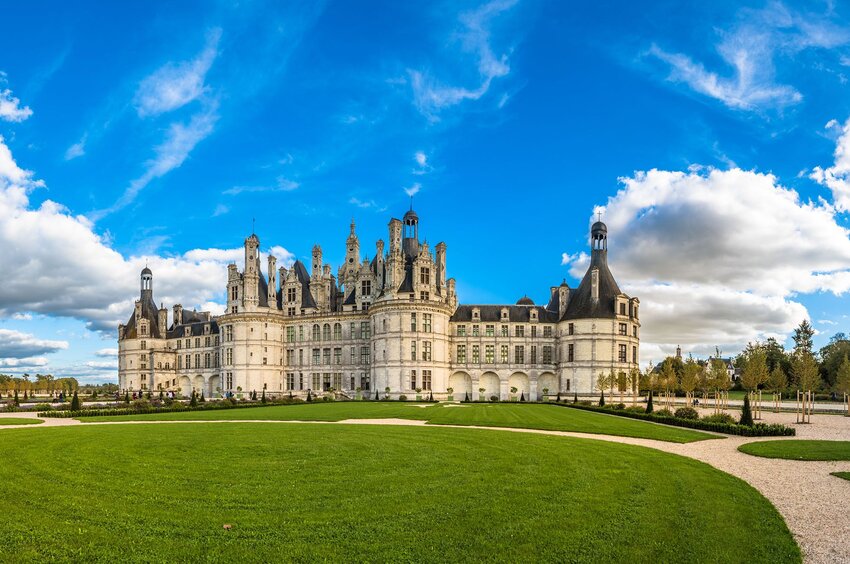
Remember how impressed Belle was when she stumbled across the Beast’s castle? That’s how Disney’s creators felt when they first saw the Château de Chambord, which allegedly inspired both the 1991 animated Beauty and the Beast and the 2019 live-action remake. In the picturesque Loire valley, the château was originally conceived as a hunting lodge for King Francois I, but was completed more than 100 years later in the late 17th century. The castle’s star attraction is a unique double helix staircase paying tribute to the genius of Leonardo da Vinci, plus one of the finest examples of formal French gardens in the world. It’s easy to imagine Belle bonding with the Beast in the Château de Chambord’s decorative rooms — or even making snow angels on its limitless castle grounds.
Bran Castle, Romania
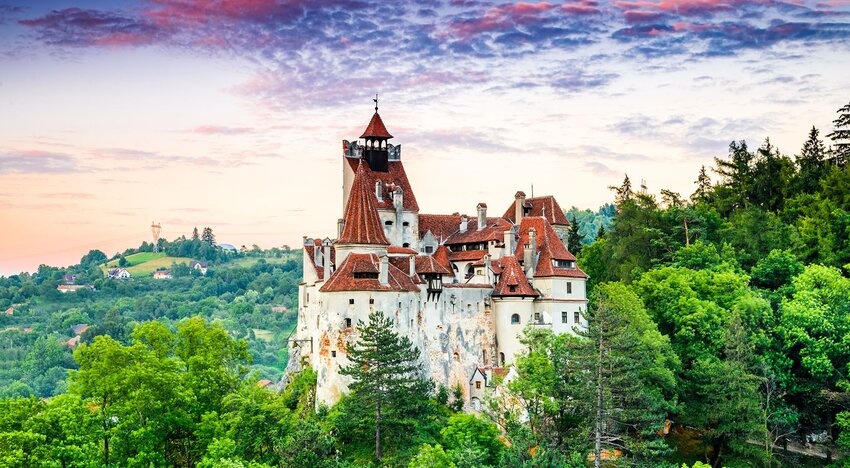
While perhaps not exactly a fairytale, this list wouldn’t be complete without a shoutout to Bran Castle, widely believed to have inspired Dracula’s ghoulish residence. Although author Bram Stoker never visited Romania, this impresive castle matches Stoker's vivid description. The 14th century castle is built on the edge of a precipice, close to a gushing stream, and set deep within a dark forest that's perfect for a mysterious Transylvanian count to hide in. But if you come to this medieval castle to learn about Dracula, you might be disappointed — the museum within the castle focuses more on modern Romanian royalty, who made Bran their favorite residence in the 1920s.

